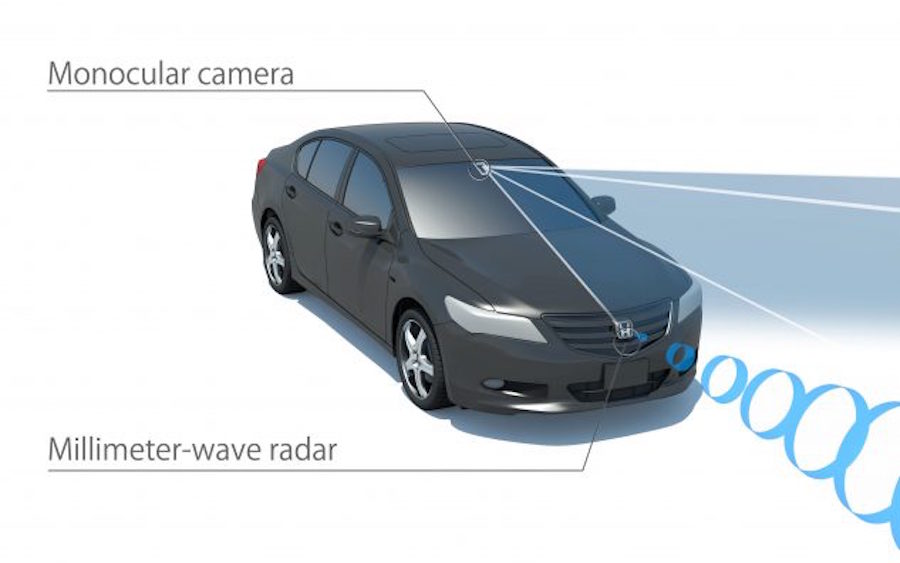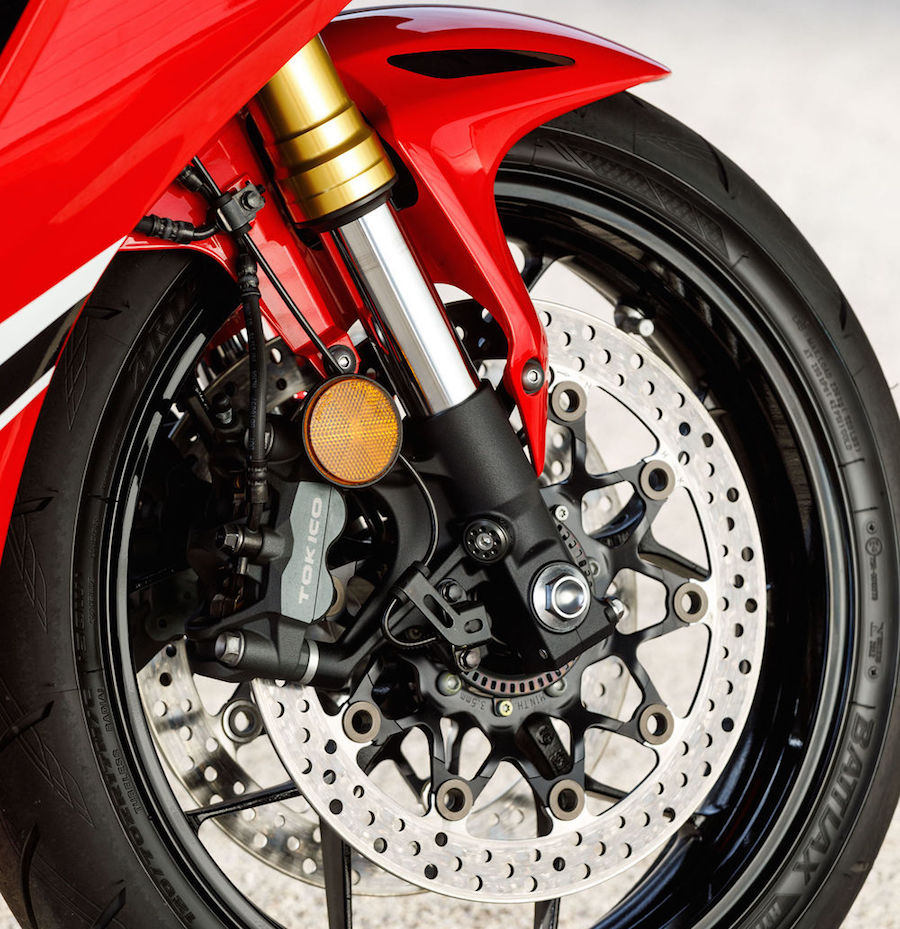Honda raised more than a few eyebrows when it unveiled its innovative self-balancing motorcycle at Las Vegas’ Consumer Electronics Show in January. While self-balancing motorcycles date back to the start of the decade, Honda swapped the more conventional (and bulky) gyroscopic solution for a clever and unprecedented two-tiered steer-by-wire system.
Now, only weeks later, the US Patent and Trademark office has published what is reported to be the Japanese manufacturer’s first foray into an automatic emergency braking (AEB) system for motorcycle. And, what it points to for many, is the somewhat inevitable realisation that fully autonomous motorcycles are probably closer than we think.
The technology is already rife on modern passenger vehicles and Honda has plenty of experience with the so-called Collision Mitigation Braking System (CMBS) it uses on its cars. In other words, the only thing stopping the company from producing a bike that does the braking for you is addressing the stark differences between how two-wheeled and four-wheeled vehicles react. And if the aforementioned self-balancing technology is already looking after the steering, then what’s to stop the two systems talking to one another to provide safe and effective AEB on bikes?

Them versus us
Honda car-centric CMBS works very effectively on an enclosed four-wheel vehicle with the ability to distribute both braking and suspension forces independently to all four wheels. On Honda cars, the automatic emergency braking capability is a four-step process beginning with a visual display on the dash, as well as an audible warning within the cabin. At this stage the car will begin to tighten your seatbelt in a bid to brace for the heavy braking forces before applying the brake pressure to avoid a collision on your behalf.
Of course, the steering on two-wheeled vehicles is affected considerably more by braking. Front brake pressure tends to stand a leaning bike up, while rear brake pressure mid-corner can have the opposite effect. While the patent doesn’t explain how it will deal with the external and physical forces on both the rider and the machine as a result of the automated braking, it goes some way to explaining the process between sensing a potential collision and hitting the picks.

Tech versus us
Just like any active cruise control or automatic emergency braking technology, the motorcycle-specific system will detect a potential hazard using both a millimetre-wave radar as well as a forward-facing camera as its ears and eyes. The system will then check to see if the rider has already detected the hazard and begun braking and, if so, will supplement the pressure and ensure the front and rear calipers are getting equal pressure for optimal stopping ability. But if the rider hasn’t begun braking, the system will hit the rear brake first, for two reasons. First, to keep the bike stable and prevent a sudden and unexpected nosedive that could startle the rider. And second, to test the grip levels so it knows just how much pressure it can or can’t apply in an emergency braking scenario. Once that’s complete, presumably all within a matter of milliseconds, it’ll apply the front and rear brakes as best it can to pull you up safely and still upright.

by Kellie Buckley